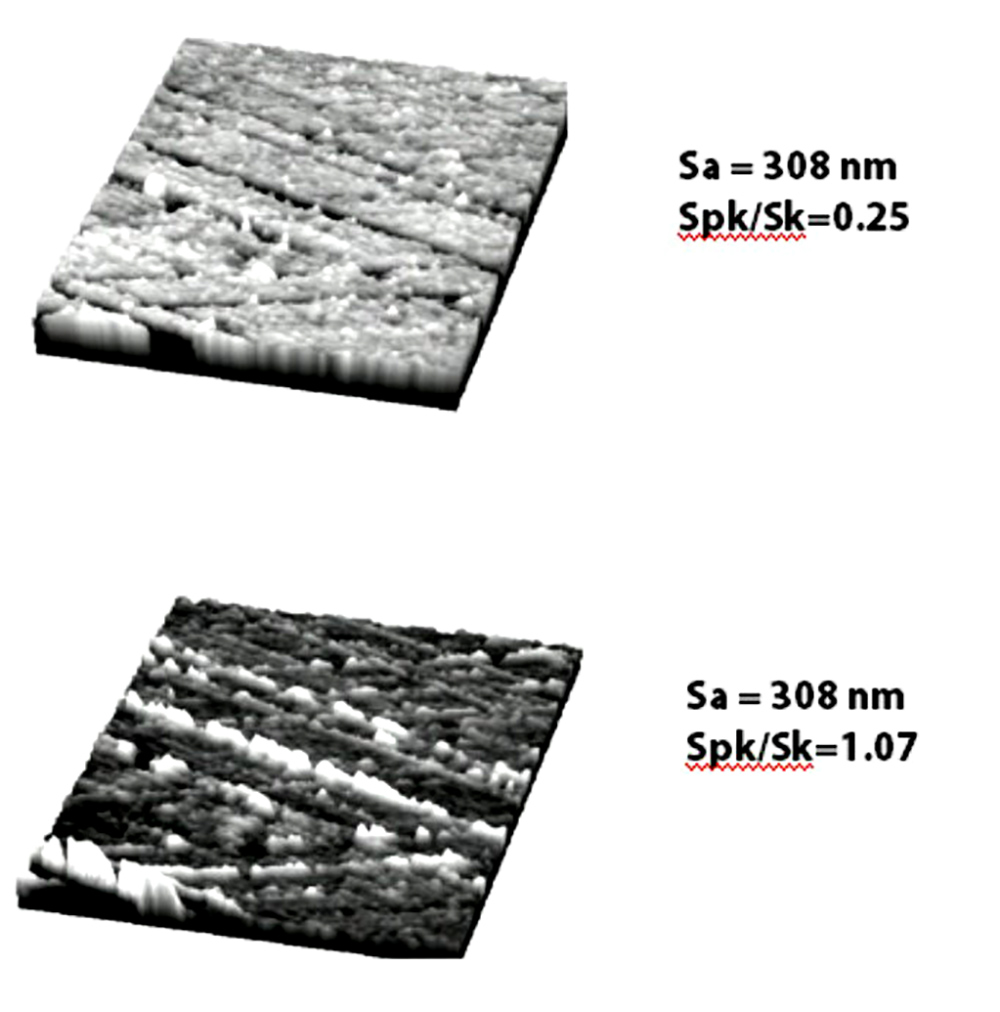Spk/Sk
The ratio of the areal material ratio parameters, Spk/Sk (Reduced Peak Height to Core Roughness), Svk/Sk (Reduced Valley Depth to Core Roughness), and Spk/Svk (Reduced Peak Height to Reduced Valley Depth Roughness) indicate the symmetry of the bearing ratio curve. Two surfaces with indistinguishable roughness average (Sa) may be easily distinguished by a ratio such as Spk/Sk, which shows the relationship between the peak material and core material.
Application
Spk/Sk can provide information about how the relationship of peak material to the core roughness. Spk by itself tells us about the magnitude of the peaks, but it doesn’t give information about the overall surface amplitude distribution. Spk/Sk can show whether the surface amplitude symmetry is consistent with what we know to be a good part.
For example, the upper surface in this image has high peaks, while the lower surface has deep valleys. Both surfaces have the same Sa value, but with vastly different Spk/Sk values. In a sealing application, a surface with a large Spk/Sk value may rip into the mating seal and cause leakage or failure.

Two surfaces with the same Sa but different Spk/Sk values.
The example below shows a surface with a “plateaued” upper region cross-hatched by valleys. The upper region of this surface, however, is actually more akin to a series of mushroom caps than to a flat plateau. The ratio of Spk/Sk may help distinguish this surface from one with a flatter plateau, which could prove critical for the surface’s sealing or wear characteristics.

The ratios may be further thought of as a measure of the texture amplitude distribution normalized by the overall roughness magnitude and thus may be used to characterize the texture amplitude symmetry.
